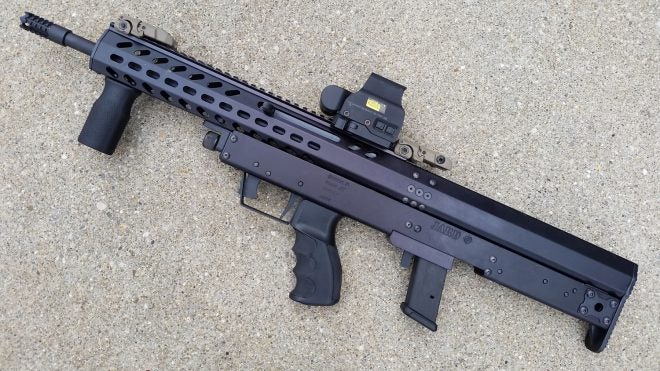Few rifle designs make me stop in my tracks. The JARD J67 was one of them.
Browsing through Google looking to build my own pistol caliber carbine (and sick of all the AR variants), a lone photo grabbed my attention screeching for attention. Having been struggling through the decision of picking up a Sub2000 or a CZ, the black rifle was a welcome respite.
9mm?
Bullpup?
Designed & Made in the USA?
Fully Ambi and M-LOK Compatible?
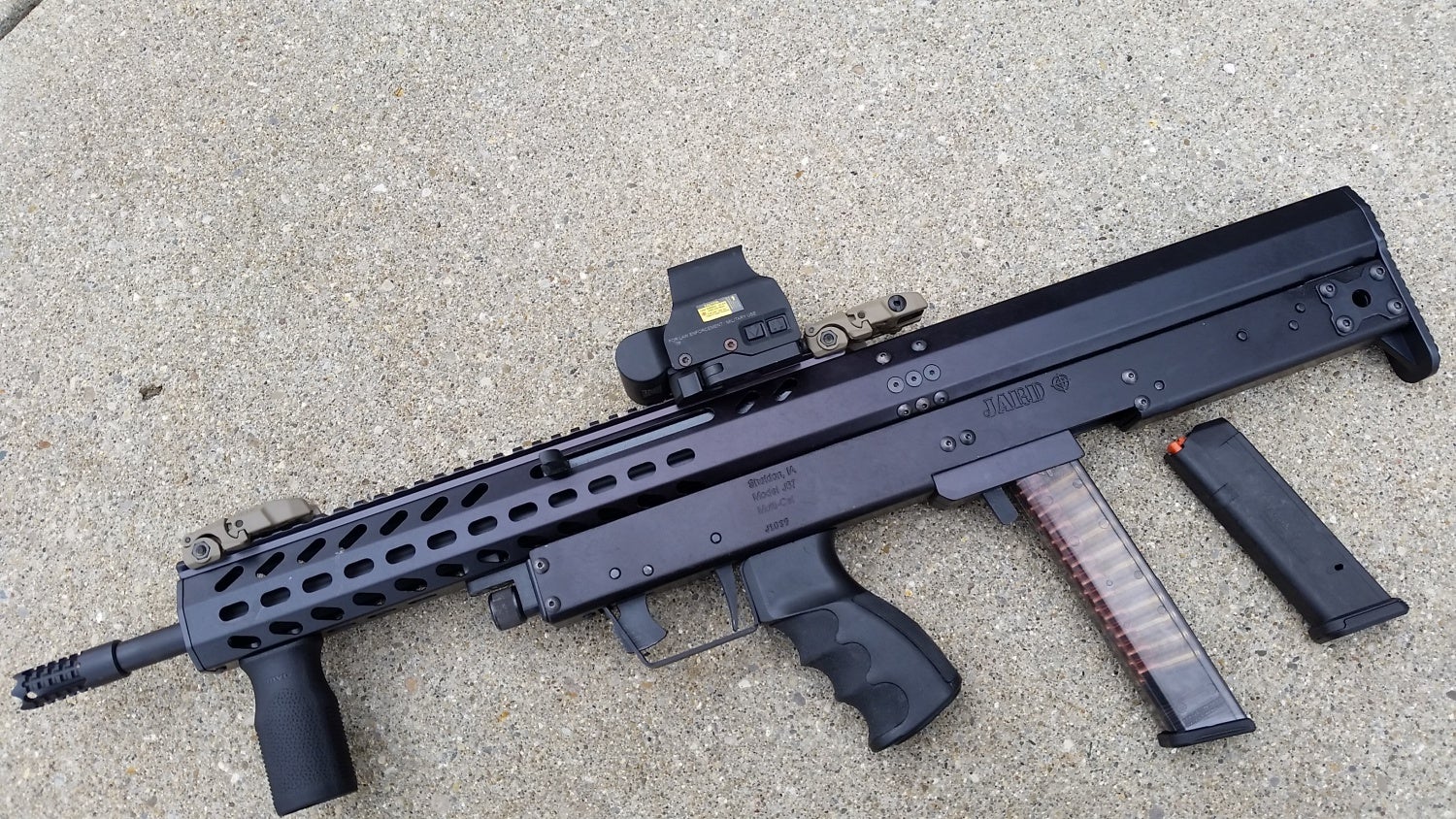
It was a dream come true and I immediately contacted the editors with a requirement (not a request, a requirement) to review one. Fortunately, JARD Inc. was amenable to the request and one of the new J67’s was on its way in short-order.
Innovative Design
The JARD J67 is the brainchild and product of a small shop in Iowa. Known for their excellent triggers, especially in the precision rifle community, JARD has been quietly toiling away on some fun rifle designs, including some buffer-tube free MSR upper receivers and side-charging uppers. The latest creation is the J67, a fully ambidextrous 9mm bullpup design.
In fact, it cannot be any more “ambidextrous”. All functions of the weapons system are mirrored on both sides of the gun. The charging handle is forward and non-reciprocating (note, no forward assist which is not needed, especially on a strong recoil spring pistol carbine), magazine release is trigger style in front of the magazine chute, and the safety is Garand-style blade built-in to the trigger guard area.
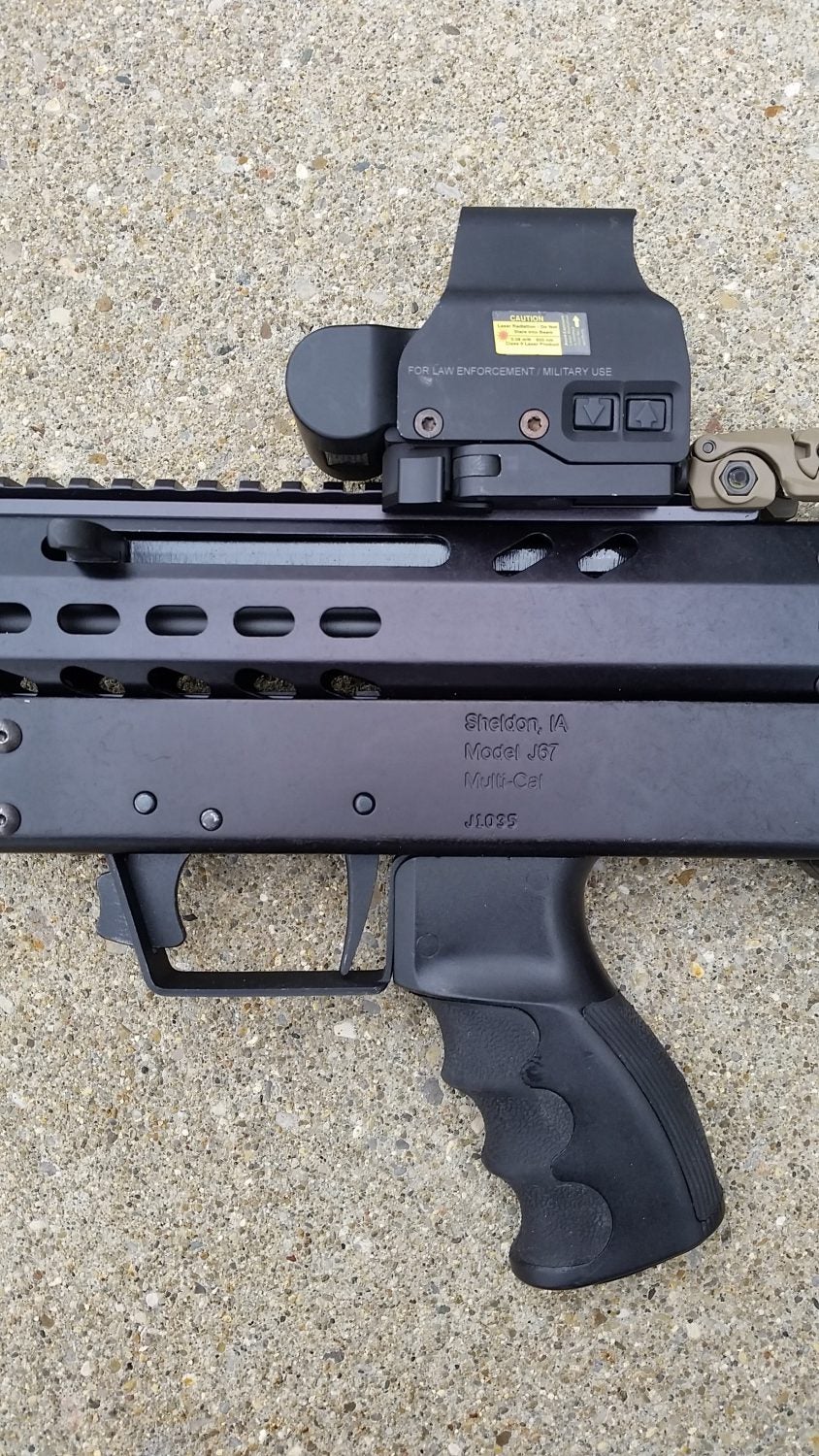
Ejection is out the bottom through a true blow-back system. Similar to the Kel-Tec RDB, the weapons bolt over-travels the magazine and the round is ejected out the bottom behind the magazine, though the JARD uses a fixed ejector system, which is actually the recoil spring guide rod. Its a novel use of needed components.
The upper receiver is a monolithic machined extrusion from the handguard cap all the way to the rear. It has the bolt guide-rails shaped directly in, requiring almost no machining, save the picatinny rail up top and the M-LOK compatible (though not officially to-spec) vent holes across the front. The lower is stamped and bent metal housing the trigger (also stamped and bent) which uses a pull method to actuate the hammer behind the ejection chute. Mikail Kalashnikov would be proud of the manufacturability of the weapon. Its simple, inexpensive, and the design is novel. The only option for customization is the addition of a threaded muzzle.
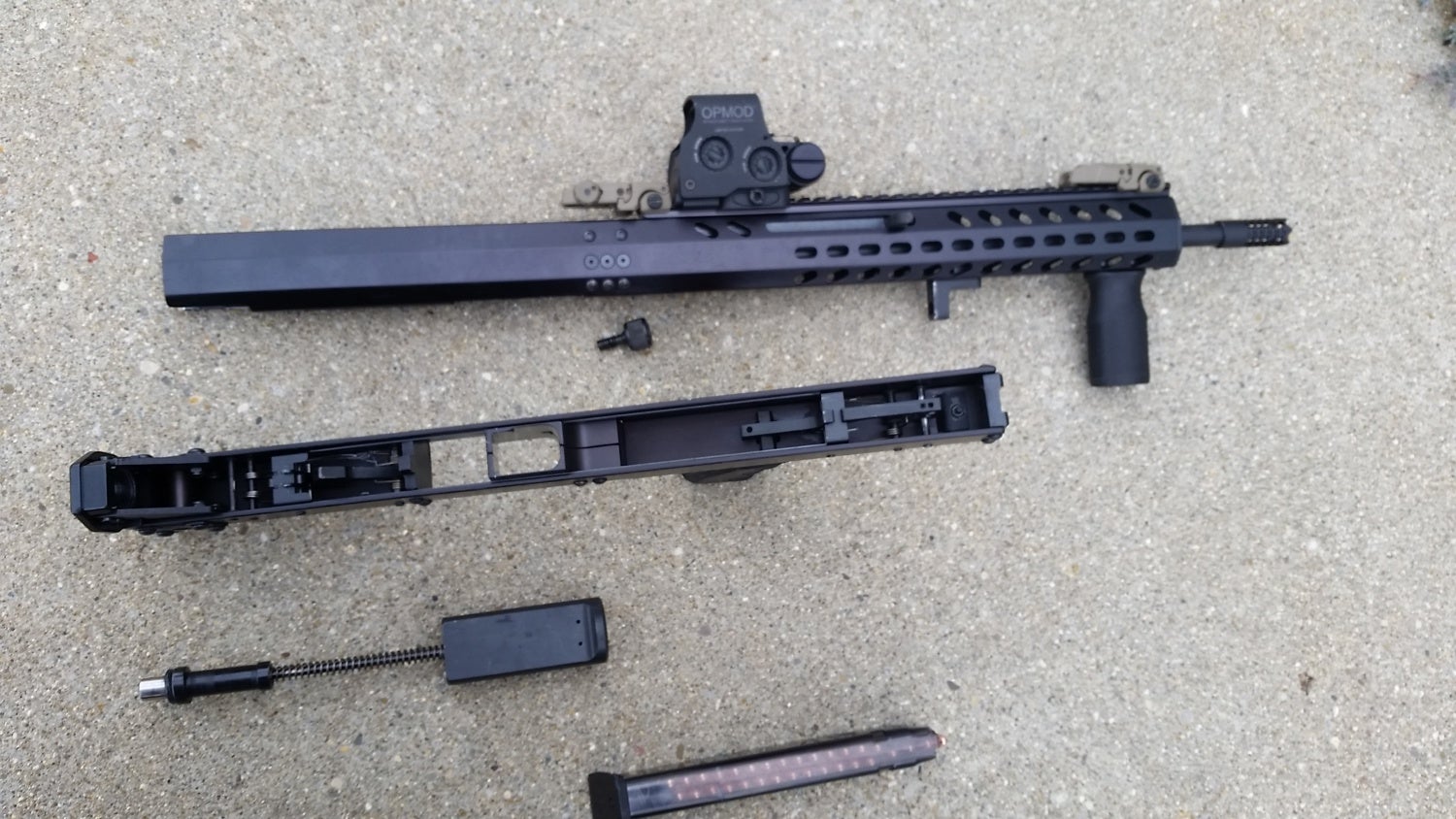
Field strip is a simple affair, as the two receivers are held together only through a large-thumb-screw at the front of the lower, which is screwed into the upper. Simply twist to remove the screw, slide the upper forward and pull up while watching to retain the recoil spring guide rod/fixed ejector. Once removed from the lower, the bolt slides and out the rear. Its as simple as it is elegant.
Shooting the JARD J67
Due to incessant rain in the Ohio Valley area (and 3-gun taking up off weekends), I saddled up and headed into the local indoor range, which has a 50-yard rifle bay so I could put some rounds down-range for real accuracy testing. For testing, the JARD was equipped with an OpticsPlanet OPMod EOTech optic and Magpul MBUS 2nd Generation sights.
Magazines available for testing included the included Magpul G17 polymer magazine, standard G17 magazines, extended G17 magazines (with Arredondo extensions), and a few of the new clear ETS magazines including a few “happy sticks” loaded with 33 rounds to bear. Ammuniton included Federal 9mm HST loads, Freedom Ammunition reloads in both 147 and 115 grain varieties, and truly “random” ammunition with a bevvy of rounds with mixed steel and brass-cased to test at the extreme.
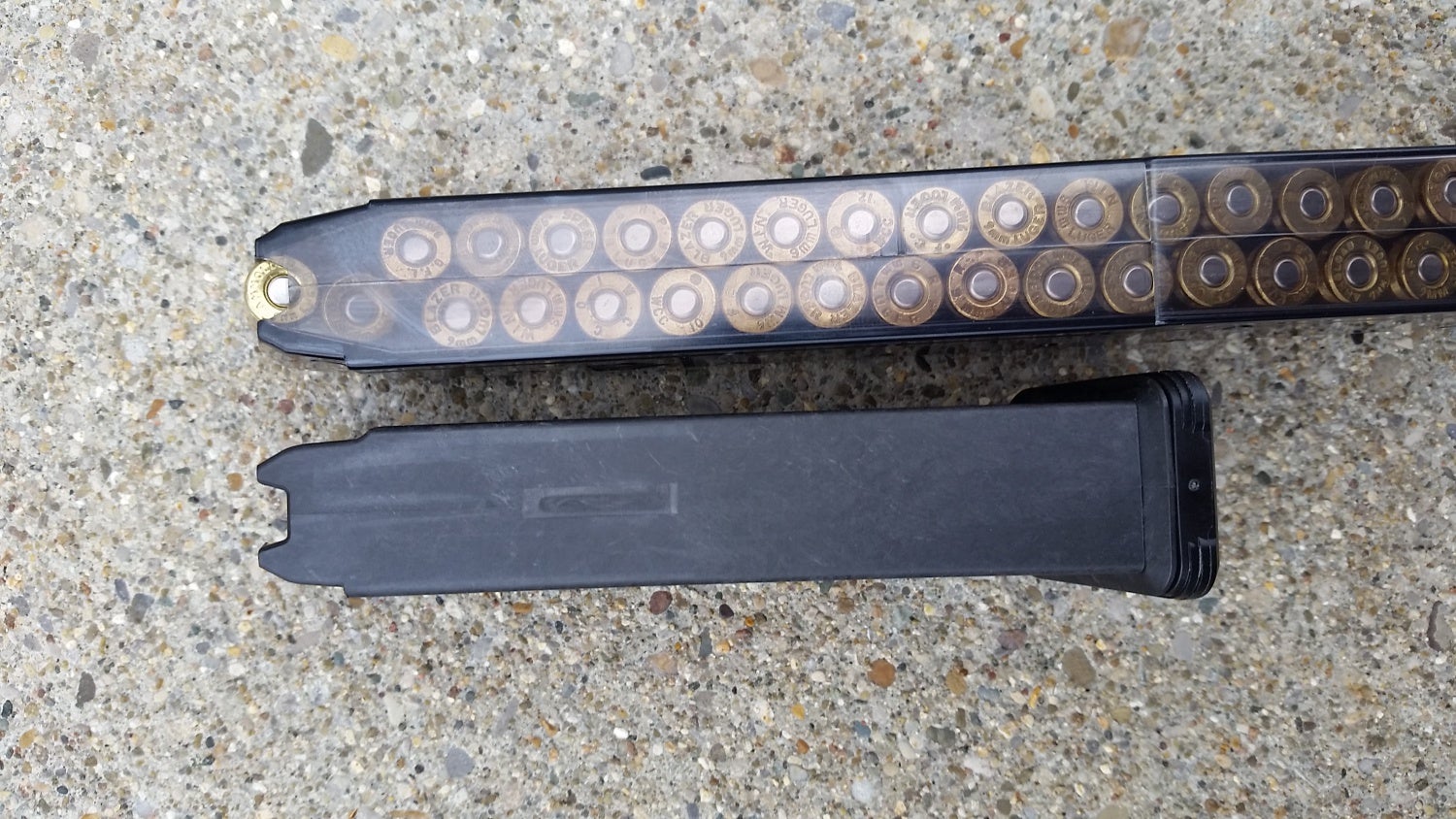
Unfortunately, the first range trip was not a good experience. Wanting to just blast-away on the rifle (nothing like breaking one in on some high-round counts), the ETS happy-sticks were up first and were very tight on the magazine well. While one could push up on them to get into place, hard, malfunctions abounded using the 115 grain Freedom. Rounds simply did not feed and due to the strength of the recoil spring, if they fell short, they were compressed, significantly.
Thinking it a glitch or an issue with the ETS magazines (which had only been used in my G22 9mm conversion), I swapped over the Glock magazines, loaded with 148 grain. Same issues. Nuts!
Fortunately, the owner of JARD is quite the hands-on fellow. Within hours of e-mail notification of the issue, I was called for a full debrief. Any first-generation of a firearm will have a few glitches, so the weapon went back to JARD for work-up, which was found to be the fixed ejector was too long, not allowing rounds to be ejected downwards behind the magazine thus causing malfuntions.
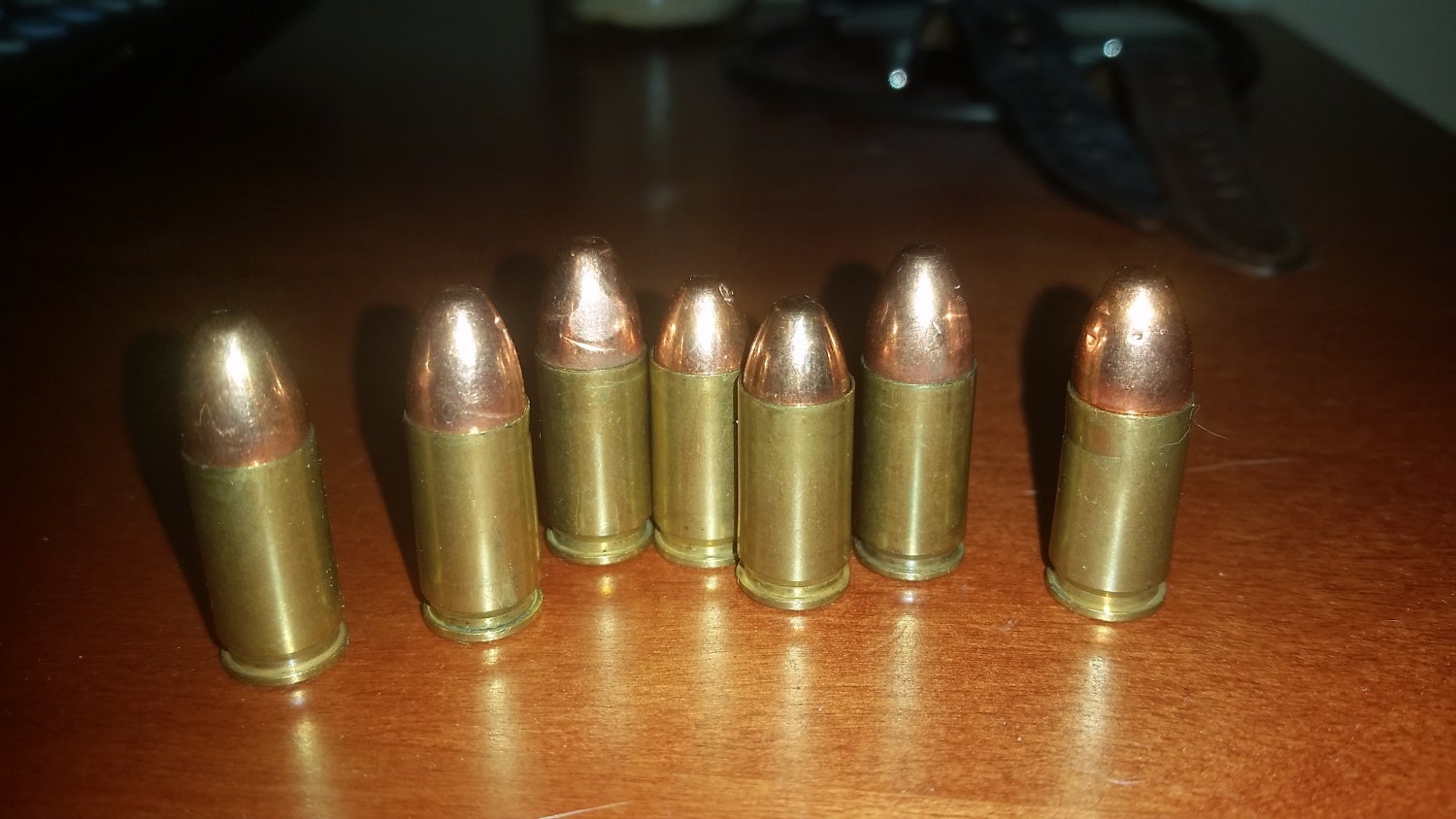
Major set-back.
JARD J67 Range Trip 2.0
With the weapon back fresh from the factory (including new-weapon smell again), I headed back to the same range with the exact same loads. This time, it was far more successful. With the feeding issues largely resolved, the weapon performed well.
Not worrying about having a significant problem, I was able to focus on the weapon, which was a welcome treat. Being a firm believer in all things MUST be ambi, the JARD ticked all the right boxes. Everything, and I mean everything is 100% mirrored and opposite from one another. The charging handle is located in a great position (far enough back to be easy to rack, not too far back that one bonks their face when charging), the trigger-style magazine release worked well (but does force purposeful magazine removal), and the safety works well, despite being Garand-style.
With rounds humming downrange at a good clip, I was able to now enjoy the trigger, which is good, even for a stock weapon. Considering that the JARD is a bullpup, its an utterly fantastic pull. Coming in around 5 lbs, it performs as a solid 2-stage with take-up and a good wall prior to break. Reset is a little mushy, but with the hammer next to ones face when firing, its easily heard.
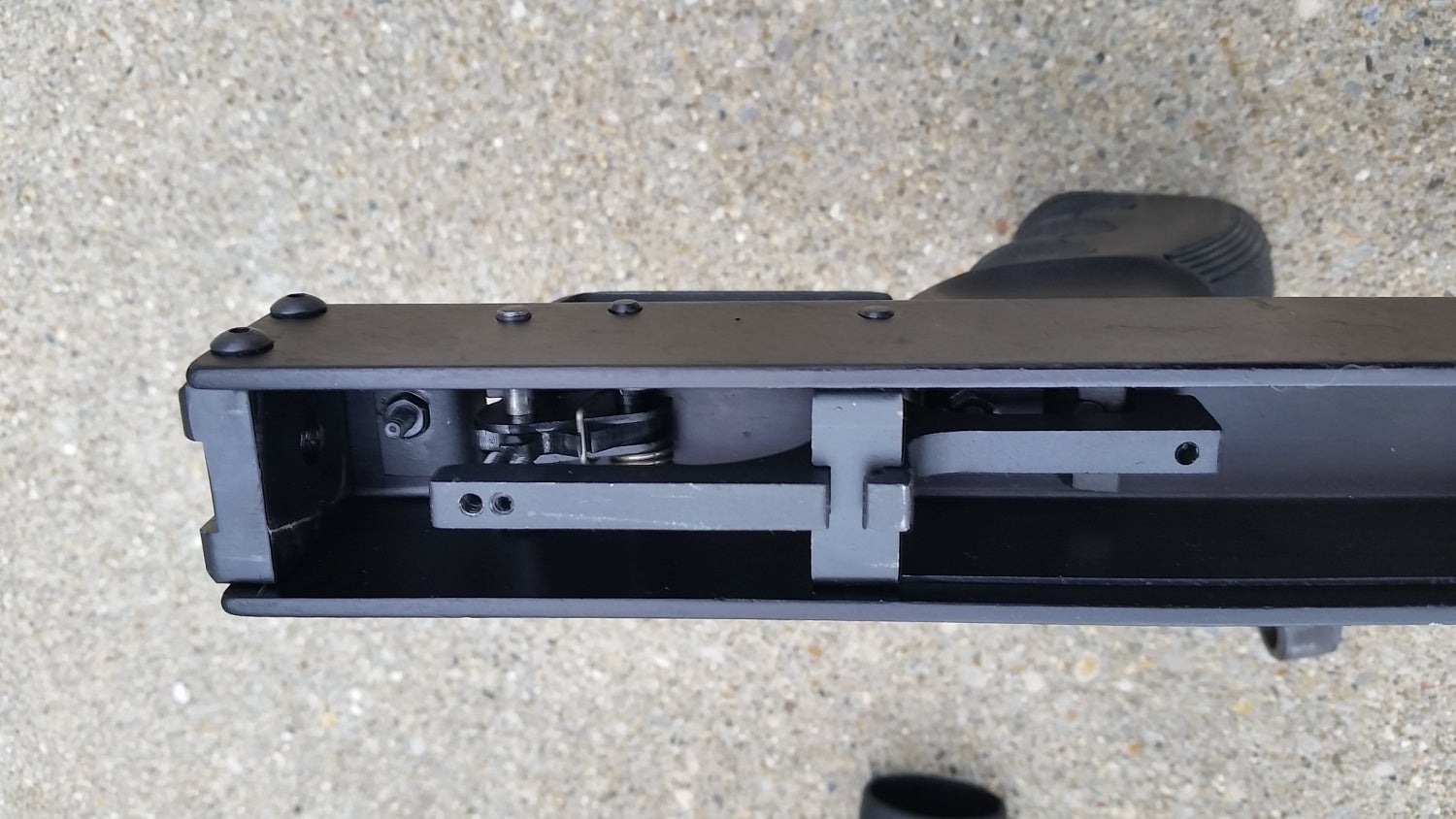
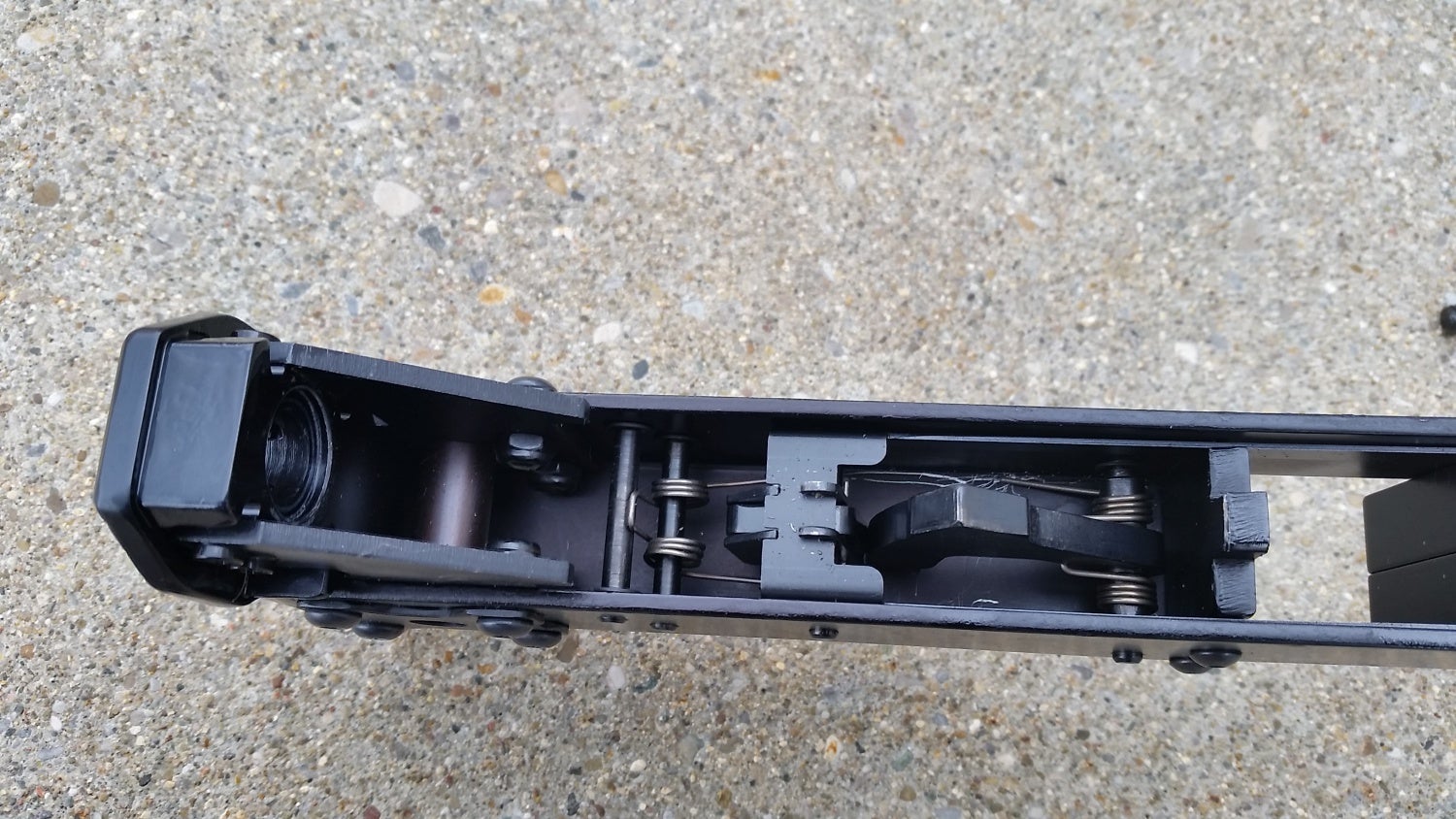
Accuracy was likewise excellent, considering it was 9mm and shot only with a red-dot (for reference, I am able to shoot about 1″ even with match ammo and an EOTech, so divide my groups by .75 to get a rough magnified result). At 50 yards using Freedom 115 grain, groups were about 4″ extreme spread, with a solid mean radius (I’d estimate about mean 1.2″ radius). 148 grain was slightly better at 3.2″ extreme spread shooting 10+ round groups.
Unfortunately, the malfunction issue raised its head again and after about 200 rounds, was running into similar failure to eject/failure to feed. While significantly less common, it was still persistent, with at least one round from magazine having issues (though strangely, the PMag never had a problem, jus the Glock and ETS magazines). The malfunctions were frustrating to clear, as normal remedial action will make the problem worse.
The issue is that one cannot see into the chamber to diagnose an issue. Most of the time the gun just speaks to the shooter with an unusual recoil pulse or dead trigger. Since the chamber is visible only when the magazine is released, one must remove the magazine and then clearing a malfunction gets interesting. To see the malfunction, one must flip the gun upside down. When flipped, the fixed ejector has to work against gravity (or the round has fallen off the bolt face and is rattle around the receiver). So, one then has to flip it right-side up, manipulate the action, watch the bad rounds fall out, flip over to check for clearance again, and then load and charge. Despite being a novel system, I would not call it combat-ready.
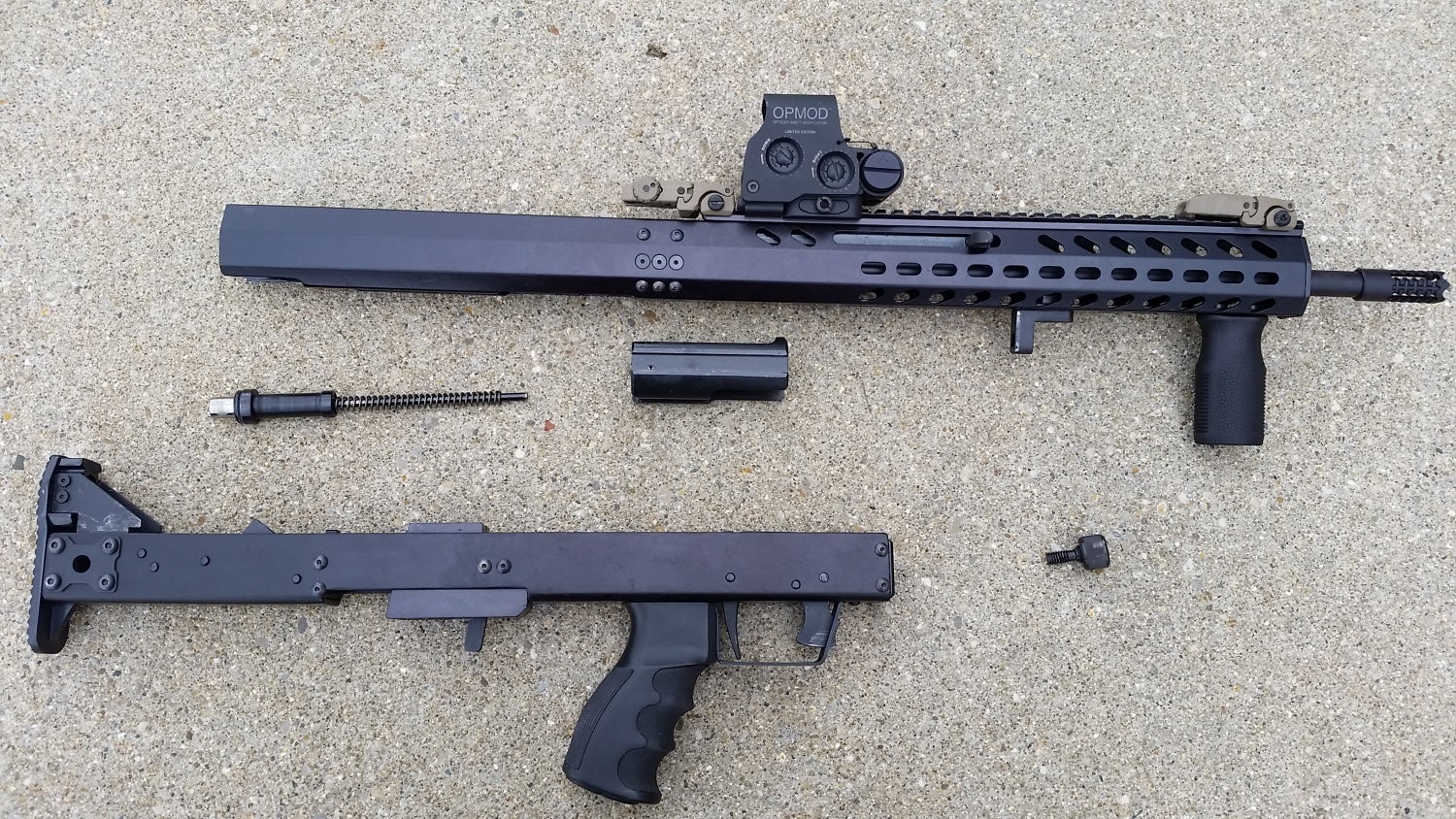
In the JARD’s defense, this is not a unique problem. The Kel-Tec RDB also faces the same issues, which will be typical of any weapon using the long-stroke downward ejection pattern. Its fully ambi, but comes at a cost of malfunction clearance when one inevitably comes around. Its then up to the designer to ensure the weapon is largely reliable.
With nearly 500 rounds down the pipe, I walked away from the range appreciative of the design, but disappointed in the final reliability. While I would not select it as a home-defense carbine, it is a great weapon to teach one to shoot on, varmint hunt, or plink on a weekend.
The Good
- Compact “Just Legal” Rifle at 26.2″ and 16″ barrel.
- Excellent trigger for a bullpup (or stock rifle, for that matter…)
- 100% Completely Ambidextrous Function
- M-LOK compatible forearm.
- Uses common Glock magazines.
- Easy break-down of the upper and lower receivers.
The Notable
- Novel design that uses the recoil rod as the ejector
- Garand-style safety. I would prefer to keep my finger out of the trigger guard but it is so far out front, I forgive it.
- A manufacturing design that Kalashnikov would be proud of. Stamped and folded lower, extruded upper, and bent steel trigger system.
The Bad:
- Not combat-reliable, but pinking fun ready.
- Excellent design execution, but would like to see more rounded corners on the trigger guard, especially for the price.
- Some rough finishes and machine marks throughout internal components.
- Metal for a cheek-rest. Gets cold in winter!
Final Thoughts:
JARD is an interesting company with interesting rifles. The J67 is no exception. Its a novel solution for a bullpup rifle and certainly has many positive attributes going for it. First, the trigger is excellent (even for any stock rifle). Its the minimum legal everything in the US (length, barrel, etc) and is 100% fully and totally ambidextrous. From there, its M-LOK compatible, easily broken down and serviced, and with downward ejection, the J67 is not just ambi but southpaw friendly.
On the flip side, its not 100% reliable (more like 95%), it feels a bit chunky (but balances well as most bullpups), the length of pull is a bit long for my tastes, and is a bit clunky too, as one might say of an AK. If I didn’t know anything about the company I would say the design was Soviet for its sparseness and simplicity. I don’t say that as a hit to the rifle, but for the price at $899 with great options like the Kel-Tec Sub2000, I did hope for slightly better.
That said, if one compares it to the Tavor (at $2500+ for the rifle and then the conversion kit), the $899 price looks very attractive.

 Your Privacy Choices
Your Privacy Choices
